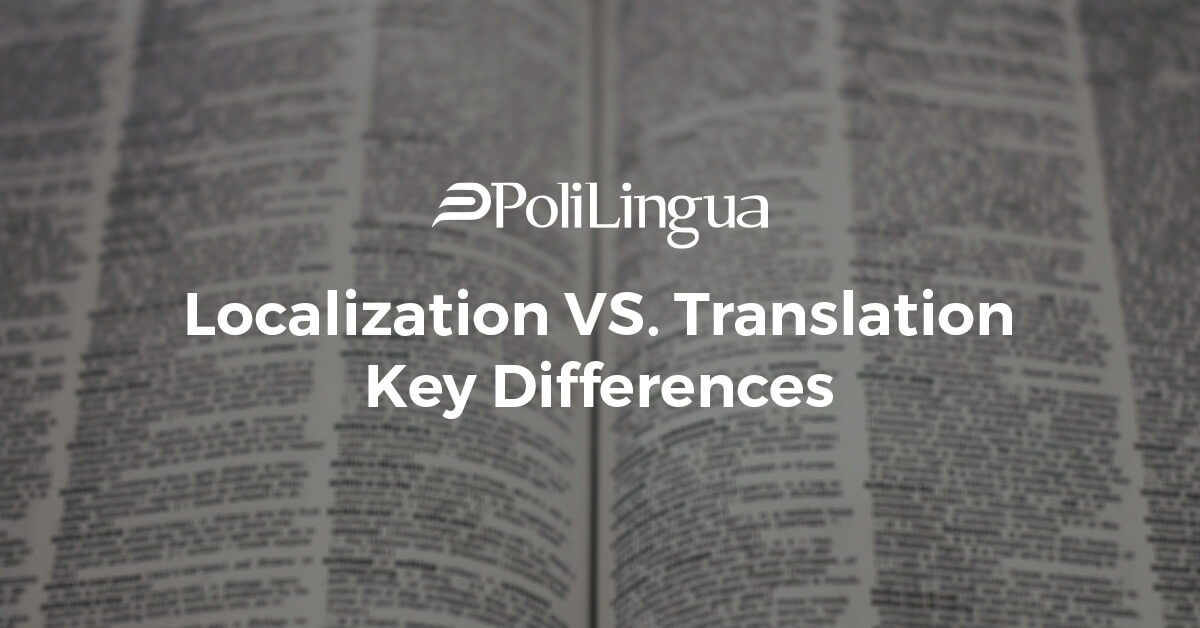
Localization Vs. Translation Key Differences
Though their end goal is essentially the same – to transform content to another language – translation and localization have a few key differences that set them apart. Also, while translation has been around for centuries, localization only became a widely utilized and known concept more recently.
When it comes to small businesses or enterprises, translation services can come in quite handy. However, localization goes beyond simple translation. Localization is an umbrella term that refers to end-to-end language including translation, as well as optimizing other aspects of the content, imagery, payment, and technical aspects of a funnel and customer experience to appeal to local market.
To help you better understand the two concepts and why localization is worth investing in, here is a guide to the key differences between localization and translation.
What is translation?
To understand the key differences between translation and localization technology, it’s important first to understand each concept. Translation is the process of changing text from one language to another with the goal of sticking to the exact meaning of the content.
With translation service, besides the meaning of the material, the vocabulary and idiomatic choices also match the pre-translated text.
Translation is widely used in managing documents where all information needs to stay intact in terms of context and intent. However, when it comes to the needs of many expanding businesses that operate in multiple locales, translation might be too limiting. Because of its literal nature, translating websites or business content often falls short in terms of local nuance and appeal.
Additionally, translation by itself cannot help businesses grow in the same way localization does, as it focuses on translating content only, whereas localization includes a suite of other services.
What is localization?
Nowadays, localization process is widely used in online media such as websites, eCommerce platforms, videos, and more. As a system of services, it can be used to both translate content and, at the same time, improve the overall experience for users, making them feel like they are interacting with a local company, rather than a global one that might be based thousands of miles away.
When localizing content, the tet is not just translated literally, but the process is done by a local, native-speaker from the specific target market who knows local nuances, slang, terminology, and cultural context and expectations of the region.
Localization service is far more effective than translation because it helps connect with audiences in a much more personal way. Therefore, more businesses focus on localization instead of translation.

What is included in localization?
Localization puts a lot of focus into the cultural context of the content, but it goes beyond just content. It makes a superb effort in presenting content that matches every user’s cultural expectations, different content types, industry, campaigns, or marketing necessities.
By taking the extra step into tending to its readers, a small business can use localization as a way to connect local audiences on a more subcultural level and tailor all adapting content to their expectations and needs.
So, what exactly makes localization a more wide-reaching concept than translation? Here are the key differences that give localization the upper hand over translation.
Layout and design
When translating from a source language to a target language within the context of a website, ad, software, or many other mediums, the layout and design needs to be taken into account.
For example, many words are much longer in German than in English, so direct translation may not always work if you’re trying to fit a heading on a website page.
A German localization expert will be able to convey the same messaging of your original heading to a German audience, even if he has to change the words slightly to fit. The same goes for languages that are written right to left instead of left to right, like Hebrew and Arabic. To localized any content for these languages, the design or layout may need to be altered.
As for design, localization will take into account things like color schemes, patterns, and overall UX that appeal to users in different markets. It will also ensure that the images used will resonate locally. For example, a website localized for many Middle East markets might use imagery of people dressed more modestly than a US-based website.

Localization vs Translation Service – Cultural context
Cultural context is the most important part of localization.
Unlike translation, where content is translated from language A to language B, localization digs deeper to make your content culturally relevant. This makes your readers or customers never feel offended and actually feel that your brand understands their wants and needs. When you don’t take cultural context into account, it could potentially hurt your business or mean that you flop in the markets you’re trying to break into.
There have been many instances of this around the world.
For example, the American toothpaste brand Pepsodent failed to succeed in the Southeast Asian markets when they directly translated their slogan, “You’ll wonder where the yellow went…” What they failed to do was research cultural norms surrounding teeth, assuming that everyone wants white teeth like in Western regions, when in fact, many people in southeast Asian cultures chew Betel nuts to blacken their teeth because they find it attractive and associate it with virtue and nobility. Needless to say, this slogan didn’t make them a hit in the region.

Measurements, dates, currency, and payment options
Let’s say that you have an eCommerce business based in the United States that ships internationally. You’ve done the hard work of development multilingual websites, localizing the content of each one to the language of your target market. On your website, you have included translated descriptions of your services or products, as well as their costs.
However, if you leave the prices of all your local websites in USD, and only allow payment via credit card or PayPal, you could easily lose customers. List and allow customers to pay in their local currencies, and offer preferred local payment options, like AliPay or WeChat in China, iDEAL in the Netherlands, and credit card installments in Brazil.
The same goes for other technical aspects of localizing your content that might differ according to country or region. For example, the order in which you write the month and dates will differ for your US customers versus the rest of the world, as will the use of imperial measurements versus metric. Ensure that your audience doesn’t get frustrated by encountering information they can’t understand, or you may lose them.
Legal and technical considerations
Localizing different aspects
Localizing different aspects of your business will also ensure that you comply with laws and data protection standards in the different markets in which you operate, such as following GDPR regulations in the EU.
Why is Localization Important for Your Business?
There are many benefits when it comes to localizing your business efforts.
First, localization service can help you enter new markets more efficiently, all the while overcoming cultural and contextual barriers for different audiences.
As it can be challenging to break into a foreign market as an international business, localization process can help facilitate the process and ensure your brand is recognizable and trusted in markets worldwide.
Small businesses and enterprises that localize their content have better engagement and higher conversion and retention rates than those that only work with translation service. However, localization process is not a one-man job, so you’ll also need to assemble a team or outsource some of the work to an LSP, to better handle the entire process and ensure flawless representation for all relevant audiences.
Moral of the story?
Whilst translation is a great place to start when boosting your business content and attracting your desired audience, it’s only a small portion of the overall localization efforts required for multi-market success. It takes proper localization to ensure that your business keeps growing and that all audiences of interest stick around for the long haul.








